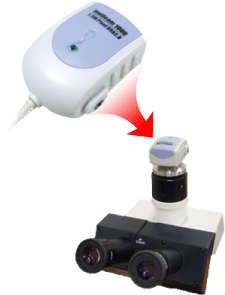- 01: Introduction
- 02: History
- 03: Propellants, Firearms, and Ammunition Development
- 04: Modern Firearms Manufacture
- 05: Small Arms Ammunition
- 06: Evidence Handling Procedures
- 07: Equipment and Instrumentation
- Introduction
- Objectives
- AFTE Knowledge and Ability Factors
- Measurement, Standards, and Accuracy
- Weight, Force, and Their Measurement
- Dimensional Data and Measurement Tools
- Muzzle Velocity of Bullets
- Stereo and Comparison Microscopes
- Small Tools and Supplies
- Imaging Equipment
- Field Support Equipment
- Computer-Based Technologies
- Firing Facilities
- Selected Bibliography
- 08: Examination of Firearms
- 09: Cartridge and Shotshell Examination
- 10: Characterization and Evaluation of Fired Projectiles
- 11: Bullet Comparison and Identification
- 12: Gunshot Residue and Distance Determination
- 13: Toolmark Identification
- 14: Communicating Results
- Resources


Digital Imaging
Home > Equipment and Instrumentation > Imaging Equipment > Digital Imaging

Video printer
Click for larger imageDuring the 1980s, imaging evolved with the use of closed circuit video cameras and monitors used in conjunction with comparison microscopes. By the late 1980s, it was possible to capture and print a screen shot of the image for case documentation. The image could also be exported to a computer for insertion in a document. These techniques continue to be useful and efficient. Bracketing was not necessary; one capture was sufficient to achieve a quality image.

Digital imaging camera,
mounted on top of microscope
As digital cameras became more affordable and versatile (1990s), their adaptation to comparison microscopy was feasible. Digital cameras can be converted to microscope cameras if the lens barrel is threaded to accept filters and measuring reticules. This adaptation is universal for comparison microscopes, but specific to the model of camera. High-quality pictures are obtained using this method. Alternatively, an examiner may obtain quality images using a handheld digital camera held up to either eyepiece of a comparison microscope.
Current comparison microscopes typically have integrated systems for digital image capture, such as:
- Image storage
- Image enhancement
- Image overlay
- Side-by-side comparisons
- Image file export
| Note: |
The equipment and instrumentation as well as the facilities and supplies required for gunshot residues analyses are covered in Module 12, Gunshot Residue and Distance Determination. |

Click here to go to Gunshot Residue and Distance Determination in Module 12.




